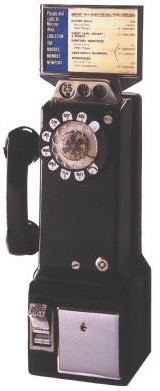About

Welcome to Payphone History
Before the widespread adoption of mobile phones, payphones and telephone booths were essential fixtures of American life, providing a reliable means of communication for millions of people. Found on busy street corners, in gas stations, airports, and shopping centers, these public telephones played a crucial role in keeping people connected—whether for emergencies, business, or simply checking in with loved ones. When landlines were not always accessible or affordable, especially for travelers and those without home phones, payphones ensured that communication was always within reach.
During the 20th century, telephone booths became iconic symbols of urban life, offering a sense of privacy in the middle of bustling city streets. They were indispensable tools for journalists, taxi drivers, and everyday citizens who needed to make a quick call. Police officers and first responders also relied on payphones before the advent of two-way radios and mobile communication, using them to report incidents or call for backup. In rural areas and along highways, payphones served as lifelines for stranded motorists, providing a way to call for assistance when no other options were available.
Beyond their practical function, telephone booths became embedded in American culture, appearing in movies, literature, and even comic books—Superman famously used them as a changing room. However, as mobile phones became more affordable and accessible, the demand for payphones declined rapidly, leading to their removal from public and private spaces. While largely obsolete today, these once-ubiquitous devices played a vital role in shaping modern communication, reminding us of an era when a simple coin and a dial tone were all that was needed to stay connected.
During the 20th century, telephone booths became iconic symbols of urban life, offering a sense of privacy in the middle of bustling city streets. They were indispensable tools for journalists, taxi drivers, and everyday citizens who needed to make a quick call. Police officers and first responders also relied on payphones before the advent of two-way radios and mobile communication, using them to report incidents or call for backup. In rural areas and along highways, payphones served as lifelines for stranded motorists, providing a way to call for assistance when no other options were available.
Beyond their practical function, telephone booths became embedded in American culture, appearing in movies, literature, and even comic books—Superman famously used them as a changing room. However, as mobile phones became more affordable and accessible, the demand for payphones declined rapidly, leading to their removal from public and private spaces. While largely obsolete today, these once-ubiquitous devices played a vital role in shaping modern communication, reminding us of an era when a simple coin and a dial tone were all that was needed to stay connected.